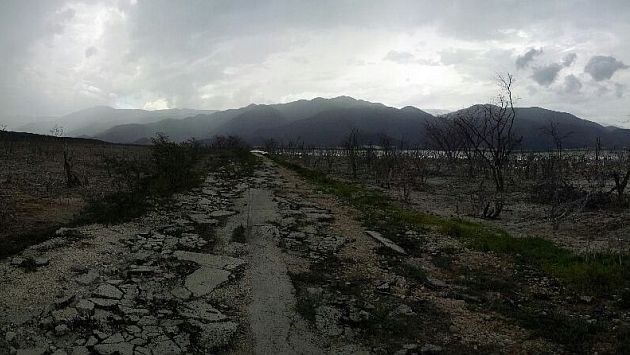Helicopter UAS superARTIS on a humanitarian mission in the Dominican Republic

Last weekend, a team from Wings for Aid and DLR travelled to the Dominican Republic (DR), to test Unmanned Aircraft Systems (UAS) for humanitarian aid. They planned to deliver disposable boxes carrying 20 kilograms of emergency goods and drop them safely at their destination using DLR’s helicopter UAS, superARTIS.
On Saturday, the team arrived in Santo Domingo. A week earlier, superARTIS had left Germany and was already waiting for us in customs. The team from DLR – Jan Binger, our UAS operator, Jörg Rößner, our safety pilot and me as flight lead – is eager to see how our helicopter performs together with the disposable boxes that Barry Koperberg and his team from Wings for Aid have created. We had already performed tests of the boxes together with superARTIS in Germany. But using this system in a real-world simulation turned out to be a completely different story.
When we arrived, the first task was to complete our team, joining up with our project partners from the UN World Food Programme (WFP), and observe how preparations had gone the over past couple of weeks.
Flashback: May 2018
Barry and I had been here in the DR on a pathfinder mission in May to prepare for the operation. We met important stakeholders, including the civil aviation authority IDAC, the Red Cross, the Center of Emergency Operations (COE) and many others. We also visited the potential sites to simulate the operation for emergency relief. During this time, we derived a to-do list a few metres in length, a real challenge for only four weeks of preparation. And one part of this to-do list we had to leave here in the careful hands of WFP.

/Flashback
And indeed, everything was prepared, all the local stakeholders are involved and coordinated and the equipment that we need locally has been organised. Just two minor things needed to be done to finally start what we came for – flying. We had to collect the helicopter from customs and acquire kerosene. Doesn’t sound like a challenge? Well, it actually was! Long story short, we lost more than a day and quite a few nerves over these ‘minor details’.
On Wednesday, finally, we arrived in Jimani, a small settlement close to the border with Haiti. It was a long journey, but we enjoyed the company of our new friends from WFP, IDAC and COE. We especially appreciated the support of Leonor from IDAC, who helped endlessly with translation and provided local experience with drone operations. Thus, on Thursday, we could finally set up our equipment for the first time and commence our testing. The plan was to fly six kilometres over the salt lake Enriquillo to deliver goods to Nuevo Boca de Cachon. In the past, this lake has been a source of flooding and had isolated settlements from essential supplies. A lot had to be tested and checked, as no one had yet performed an operation to deliver this scale of payload by dropping it from a UAS beyond visual line-of-site operation. We had to ensure that the whole operation was as safe as possible, which takes time. But due to our delay, we had only two days remaining.

Unfortunately, the weather took a turn for the worse every evening. Each time, when we were just about to do a crucial test as a milestone, strong winds arose and grounded our helicopter. There was no chance to make up for the lost time. Hence, on Friday night, during the debriefing, our spirits could not have been lower. The day after, we had originally planned to pack up and return to Santo Domingo. And the weather forecast was not promising – not promising at all. But the DLR team and our new friends held together and decided to get up extra early and hope for a window of opportunity to still make it back to Santo Domingo on time. None of us liked the idea of going home without completing the mission. Mission first, as Barry always says.

We did get up early, earlier than you would want to know, and checked the sky first. It was still twilight, but you could already see the dark clouds rising. So we hurried, set up everything, cleared the drop area, woke our stakeholders and started the operation. And finally, we succeeded. The mission was completed; boxes filled with high-energy biscuits and Progresina, a food supplement, were safely delivered and everybody involved was enthusiastic and impressed. The team is very proud and this compensates for a few sunburnt bodies and days with only intermittent running water. And eventually, as we returned to Santo Domingo, it started raining cats and dogs, but we are back on track and eager to do more test flights here.
Tags:
